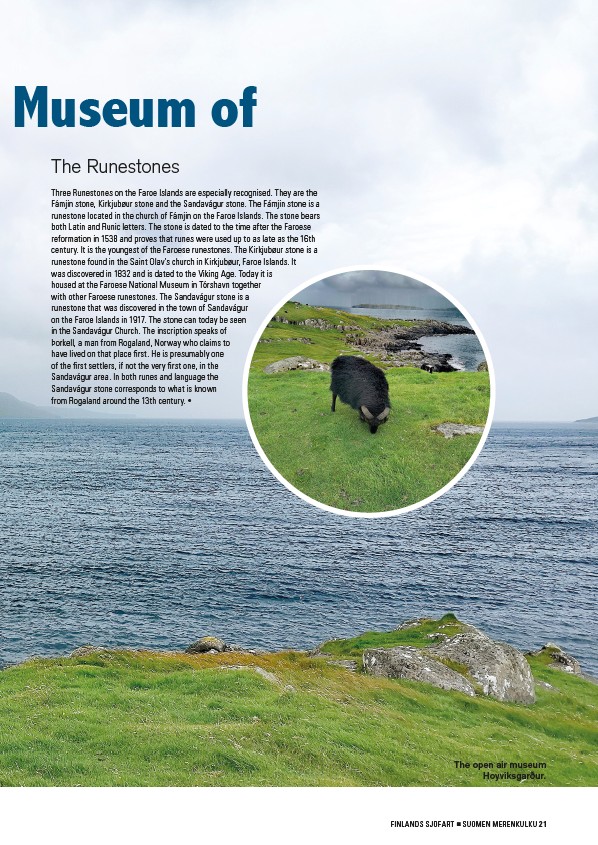
FINLANDS SJÖFART J SUOMEN MERENKULKU 21
Museum of
The Runestones
Three Runestones on the Faroe Islands are especially recognised. They are the
Fámjin stone, Kirkjubøur stone and the Sandavágur stone. The Fámjin stone is a
runestone located in the church of Fámjin on the Faroe Islands. The stone bears
both Latin and Runic letters. The stone is dated to the time after the Faroese
reformation in 1538 and proves that runes were used up to as late as the 16th
century. It is the youngest of the Faroese runestones. The Kirkjubøur stone is a
runestone found in the Saint Olav’s church in Kirkjubøur, Faroe Islands. It
was discovered in 1832 and is dated to the Viking Age. Today it is
housed at the Faroese National Museum in Tórshavn together
with other Faroese runestones. The Sandavágur stone is a
runestone that was discovered in the town of Sandavágur
on the Faroe Islands in 1917. The stone can today be seen
in the Sandavágur Church. The inscription speaks of
Þorkell, a man from Rogaland, Norway who claims to
have lived on that place first. He is presumably one
of the first settlers, if not the very first one, in the
Sandavágur area. In both runes and language the
Sandavágur stone corresponds to what is known
from Rogaland around the 13th century. •
The open air museum
Hoyvíksgarður.